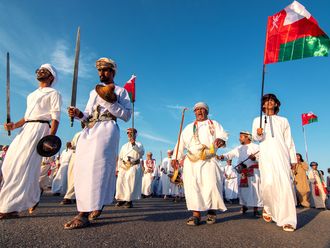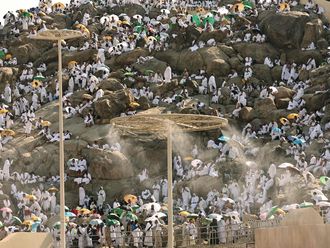Muscat: Oman’s Ministry of Commerce and Industry confirmed that it is updating the Omani standard of the Omani khanjar (dagger), version 2007, in cooperation with the Public Authority for Craft Industries (PACI).
The ministry added the Omani khanjar should be made on licensed premises and in accordance with the prescribed norms for its creation. The standard of the silver used in making the khanjar, for instance, should match Royal Decree No. (109/2000). Rhino horns should not be used in the dagger’s making in accordance with ministerial decision No. (169/1994).
The ministry added that the khanjar for children and those below 16 years should have a blade that is not sharp, or should not have a blade at all. The wood used should be sandalwood or similar, the blade should be made of rust-proof steel, and the leather used can be genuine or non-genuine. The cloth should be velvet and there should be a consistency between parts of the khanjar, its size and weight.
The ministry indicated the khanjar prepared for marketing should come with the following data: silver or gold standard, year of manufacture, a tag saying, ‘Made in the Sultanate of Oman’, type of the Khanjar, name of the manufacturer, and any other data the manufacturer sees as important.
Khanjar is a traditional dagger that originated in Yemen, and is worn by men on ceremonial occasions. It is a short curved sword shaped like the letter “J”; it resembles a hook.
It’s a popular souvenir for tourists and sold in souqs nationwide. The price of the khanjar ranges between 250 rial and 10,000 rials (Dh2,384 and Dh95,391).












